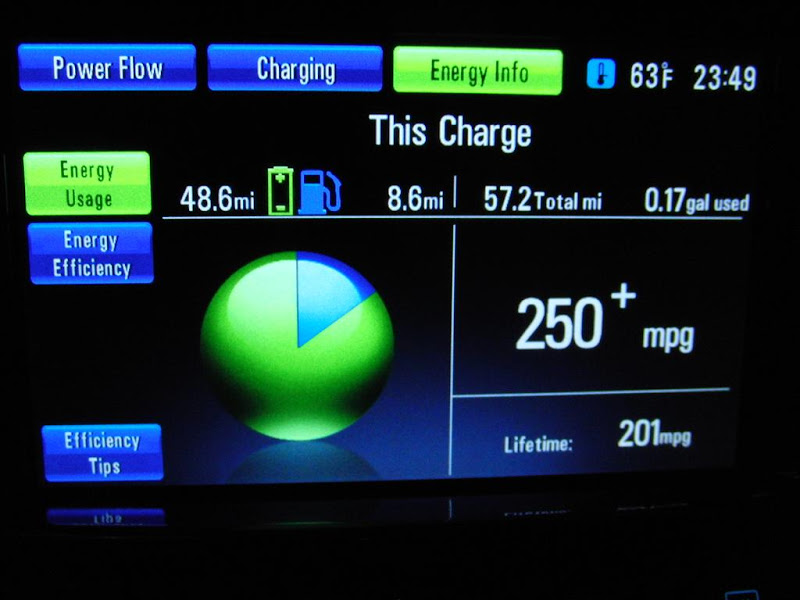cwerdna said:
Is the bolded part what's revolutionary or the rest? Toyota's been doing this w/the power split device in the Prius since December 1997
As the "end-user" I don't really care how they do it as long as it is as efficient as possible and is reliable. That is really what the vast majority of car drivers want and GM made this car for the masses and not for the "engineers" (of course, many early adopters are fascinated with the engineering). Seems a little pedantic that everyone is SOOO concerned about this. Like the Prius end-users care how they get good mileage!
The Prius is impressive and I see many every day driven by all types. I often point to their sales data since the first 4 years they were under 20K and then it caught on. http://en.wikipedia.org/wiki/Toyota_Prius#Sales" onclick="window.open(this.href);return false;
I was watching a kick off video of the Toyota Prius Plug-In several days ago. They have to go out of all electric mode at
62 MPH then uses gas. I've read: "The current non-Plug-In Prius' top speed in electric-only mode is
35 mph" then uses gas. Yes, there are several companies that will convert your old Prius to work more like a Volt for several thousand dollars and at several top in speeds (52-75?) but I have no doubt the kW usage efficiency drops dramatically at their higher speeds. Shows how impressive GM's feat was that as great of engineers the factory/official Plug-In Prius have they had to go to gas at such a low speeds presumably because of kW usage efficency.
What seems pretty impressive with the drive train in the Volt is they managed to get four modes.
The first 2 are electric only and the Volt can go up to 100 MPH just running on the battery with their engineered method and do it efficently.
http://www.insideline.com/chevrolet/volt/2011/how-the-2011-chevrolet-volt-works.html" onclick="window.open(this.href);return false;
Four Modes of Operation for Volt's drivetrain
Let's walk through the four modes in which the 2011 Chevrolet Volt works.
Battery: Mode 1: Low-speed electric-only mode up to 70 mph. The main traction motor-generator is turning, but it can only go so fast. Here the ring gear is locked so it can't turn. The second motor-generator and the engine are disconnected and out of the picture. The main traction motor is left alone to drive the sun gear from battery power, which sets the planets in orbit. The orbit speed is sent out through the carrier and is proportional to vehicle speed.
Battery: Mode 2: High-speed electric-only mode up to top speed (100 mph) [think Europe or major USA freeways where 75 MPH/120 KMH is not unusual]. The engine remains dormant. Now the ring gear unlocks and is instead clutched to the second motor-generator, which is acting as a motor to set the ring in motion. With the sun already spinning, any rotation of the ring in the same direction will increase the overall orbit speed of the planets, which in turn increases vehicle speed beyond 70 mph.
Getting the Terms Right
GM points out that the different planetary layout used by the Toyota Prius Plug-In makes its engine come on in Mode 2. On the other hand, GM's Voltec system has three clutches, while the Prius HSD system has exactly zero.
More detailed article about the four modes of the Volt's Drivetrain:
- Mode 1: Low-speed EV Propulsion (Engine Off [yea])
- Mode 2: High-Speed EV Propulsion (Engine Off [yea])
- Mode 3: Low-speed Extended-Range Propulsion (Engine Running [yuck])
- Mode 4. High-Speed Extended-Range Propulsion (Engine Running [yuck])
http://www.greencarcongress.com/2010/10/chevy-volt-delivers-novel-two-motor-four-mode-extended-range-electric-drive-system-seamless-driver-e.html" onclick="window.open(this.href);return false;










